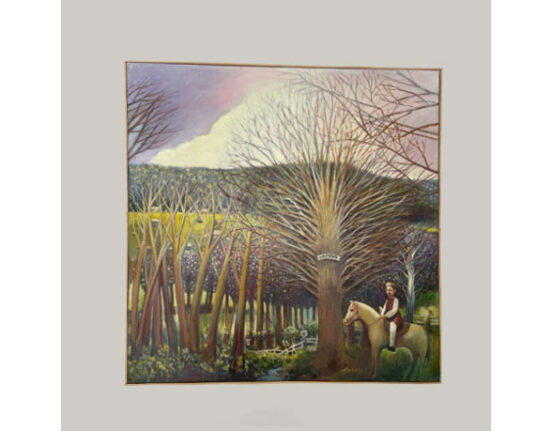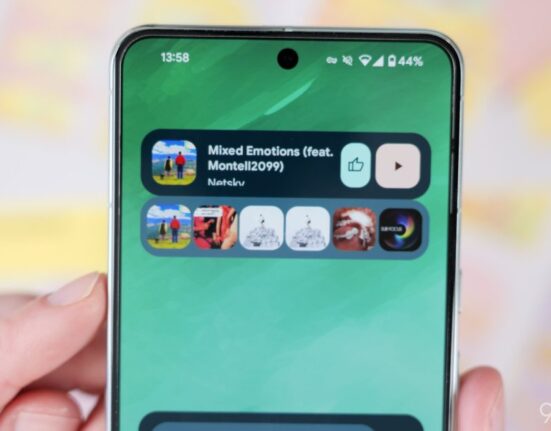For the past few years, the right has worn itself out decrying “cancel culture”—claiming that left-wing mobs have destroyed the career of artists, writers, and freethinkers—and equating it with censorship. Liberals have typically been the first to point out that this is absurd. If someone says or does something that offends your sensibilities, you are of course free to avoid supporting that person’s professional or creative endeavors with your time and money. That is not censorship—it’s merely a consequence.
But in response to the Israel-Hamas conflict, something has shifted. Compared with the tremendous suffering in the region, the opinions of American makers and consumers of art are a trivial concern. And yet the war has torn apart long-standing alliances in the arts and revealed ways of thinking that are, I believe, fundamentally dangerous to our democracy.
It began with the 92nd Street Y “incident.” The Pulitzer Prize–winning author Viet Thanh Nguyen—who has long-endorsed a boycott of Israel—was scheduled to speak at the Jewish cultural institution about his new memoir. However, in the days prior to the event, Nguyen signed an open letter criticizing Israel’s treatment of Palestinians that did not mention the October 7 attacks by Hamas. On the day of the event, 92NY announced that Nguyen’s appearance would be postponed. Controversy, as you might expect, ensued. Writers pulled out of future events and staffers resigned in protest. The organization was accused of suppressing free speech.
I saw it very differently. Perhaps that’s because my worldview was shaped by the 15 years I spent as an entrepreneur running an artistic enterprise—I was a high-end event producer and designer. Or perhaps it’s because I went into the profession with no economic safety net, as a single woman living in one of the most expensive cities in the world. Either way, I have always been keenly aware that the creative professional in a capitalist society has a great deal of freedom, but she is not free from the consequences of her choices. Vocally supporting a political candidate or cause can ostracize you from potential clients on the other side of the issue. That doesn’t mean you shouldn’t stand up for what you believe. The question is simply one of personal values: Is taking this position more important to me than the potential consequences, even if they affect my bottom line?
Every artist must exist in two realms: as the art maker, who thinks and ponders and creates work of radical honesty (an activity that one could argue is inherently political), and as the art mover, who, however reluctantly, must be part showman and part businessperson. Both come together every time a writer walks onstage. Because book talks have cultural value, it can be easy to forget that they are in fact commercial opportunities—performances designed to be entertaining in the hope of moving books.
When I look at it this way, I see that Nguyen, the art maker, has not been censored at all. Nguyen, the art mover, has simply lost one economic opportunity—the chance to sell a large number of books in 92NY’s 900-seat auditorium. The Y invited Nguyen knowing his anti-Israel politics. It postponed the event, presumably, because Nguyen criticized Israel without acknowledging the Hamas attack, which has traumatized many members of the Y’s community and its donors. The event organizers decided it was the wrong moment to offer Nguyen their stage. That is their right. Just as signing the letter was Nguyen’s.
This question of censorship versus consequence was also raised in an open letter published in Artforum, signed by many artists, that called for Palestinian liberation and demanded a cease-fire. (It was later updated with a coda, but the original did not mention the October 7 attack either.) After the letter came out, many of the signatories said they faced retaliation. Nan Goldin, who recently canceled a project with The New York Times in protest of its coverage of the war, said that artists were being “blacklisted” and that it was “chilling.” Others said they’d been pressured by their gallerists to stay silent about their pro-Palestinian views for fear of offending collectors. Some industry insiders have proposed selling off the work of artists who signed the letter—perhaps even at a lower value than they bought it for—as a kind of punishment that would “diminish the artists’ status.”
At first glance, I found this a bit chilling myself. Just because a collector buys a painting for a huge sum of money doesn’t mean she owns the artist. Should selling a sculpture condemn an artist to having her speech policed in perpetuity? You have their art. What more does the artist owe you? This is no longer the patronage system, after all.
Except, in many ways, it is.
All of this was once a lot more straightforward. Artists were craftspeople sustained by the Church, and later by nobility. You knew what you had to do: paint some Pietàs, maybe a fresco or two, a royal portrait. Don’t blaspheme or insult any kings.
But of course, artists have always been human beings with temperaments and opinions. Renaissance painters, says Marie-Louise Lillywhite, an art historian at Oxford, created “these incredible masterpieces within a climate of compromised freedom.” She told me the story of a Venetian painter, Melchiorre Galluzzi, who wanted to depict Christ kneeling at his baptism. His patron did not think it appropriate to show Jesus on his knees. The painter solicited outside opinions and was assured by fellow artists and clergymen that there was no religious issue with a kneeling Christ. But guess whose preference won out? We know the artist made the change, Lillywhite said, “because in the end, Christ is shown standing.”
Alex Taylor, an art historian at the University of Pittsburgh, studies the transformation of the art market from commissioned portraiture to the works of renegade geniuses. Historically, he told me, “artists and patrons were in the messy work of sorting this out together. They were disagreeing; they were coming to compromises.” Put another way, for a long time, the art maker and the art mover not only had to coexist; they had to collaborate with the patrons commissioning their work.
As artists became stars in their own right, more middlemen got involved. Dealers, and then galleries, began to manage the scheduling of shows; marketing, advertising, and publicity; and much of the legal, financial, and logistical work of selling artists’ art. Some also began to act as social directors—getting their artists in front of collectors to help foster relationships and interest in the artists’ work. They served as proxies for the art movers, allowing artists to simply be the art makers that most of us crave to be. And in exchange, they often took 50 percent of the proceeds, making them in effect equal business partners.
“Most artists now are happy to be protected from those pressures,” Taylor told me. Galleries and museums “make it possible for artists to imagine that their work is unhampered by controls or restrictions.” In fact, this whole idea of artistic freedom, he said, is “often somewhat of a myth.”
Taylor’s book Forms of Persuasion: Art and Corporate Image in the 1960s recounts the origins of the art collection that David Rockefeller, the chairman and CEO of Chase Manhattan, created for the bank. Rockefeller very much wanted a Mark Rothko piece included in the gargantuan office building. Rothko, known for being anti-establishment and leaning socialist, was notoriously prickly about where and how his art was displayed. He famously pulled a series of murals he’d created for the Four Seasons Restaurant after dining there, stating, “Anybody who will eat that kind of food for those kinds of prices will never look at a painting of mine.” He wasn’t going to like the idea of selling his work to a bank. But the curator serving as the go-between believed that Rothko might sell to Rockefeller himself. “Whether it’s owned privately or by the company,” Taylor told me, “doesn’t really matter. But at some level, there was a sense that that difference really might matter to the artist.” They were right: In 1960, Rockefeller acquired Rothko’s White Center (Yellow, Pink and Lavender on Rose) for almost $10,000; it ended up on the wall of his office at Chase Manhattan.
I write novels—a mass-market art. Although I enjoy seeing a photo of a celebrity with my novel in hand, it does little for the book’s long-term reputation. For artists building a career, however, whom they sell a painting to is almost as important as selling the painting at all. Being held by the right collectors or cultural institutions increases the artists’ value. On the secondary market, the provenance of a work of art can matter as much as, if not more than, its quality.
The Rockefeller Rothko broke auction records, by the way, in 2007. Sotheby’s estimated that it would sell for $40 million, The New York Times reported—“a gamble that the Rockefeller name will make the painting more valuable.” It went for almost twice that.
Between artist and collector runs what the writer and NYU professor Amy Whitaker refers to as “reputational tether.” The tether goes both ways. An artist who got a career boost years ago by having a piece acquired by, say, Harvey Weinstein, might find herself discomfited to be in his collection today. That artist might have even asked their gallerist to quietly arrange a sale to another collector. More and more young artists are exerting a say in whom they would like to own their works and what might happen to them down the line.
Similarly, a collector might feel hurt or offended by a stance an artist takes on social media or in an open letter. This might shift their perception of holding on to or acquiring more of the artists’ work. To go further, it might actually change their perception of how they see the art—enough that they no longer wish to own it.
No one is stopping the artist from making art about anything that they want, or from publicly or privately taking whatever political stance they want about Israel, Palestine, or the United States. But artists who make a living from their work are also entrepreneurs, and entrepreneurs can face consequences. This is not censorship; it is, like it or not, capitalism.
Censorship is a fun word. It’s a dramatic word. And as an artist, I love to be dramatic. But by throwing it around, we risk taking for granted our privileges as Americans. The artist Katsu once mounted a New York gallery exhibition featuring portraits of tech billionaires, including Mark Zuckerberg, rendered with Katsu’s own feces. No one stopped him. We can post memes or write poems about Biden’s age, or Hunter’s laptop. If we are truly idiotic, we can go on TikTok and wax poetic about the wonders of Osama bin Laden’s “Letter to America,” and never give it a second thought.
We also risk dulling ourselves to the true acts of censorship that have been imposed by our government. In the 1920s, Virginia had a board of censors that reviewed films in order to prevent people from encountering depictions of Black and white Americans being treated equally. People are often shocked when I tell them about the Gag Law of Puerto Rico, which in the late 1940s made it a criminal offense to sing songs critical of the United States government or to make art featuring the Puerto Rican flag (let alone to fly the flag itself). Many American citizens were jailed as a result.
Real censorship continues today. El Museo del Barrio in New York, which receives government funds, recently changed its mind about displaying an artwork it commissioned because the artists included a Palestinian flag. Beyond the arts, states are restricting the teaching of African American history and policing speech through Florida’s “Don’t Say Gay” law. Legislators across the country have repeatedly attempted to outlaw drag performances. School boards have stripped books from library shelves, and some states are putting into place criminal consequences for librarians and educators accused of violating these book bans. These are the kinds of actions that make me worry about the future of free speech and artistic expression in America—not the cancellation of a book talk or the drop in a painting’s value.
So, artists, let’s enjoy the relatively low-stakes consequences while they last. It’s called “taking a stand,” after all, because sometimes you get knocked down.







